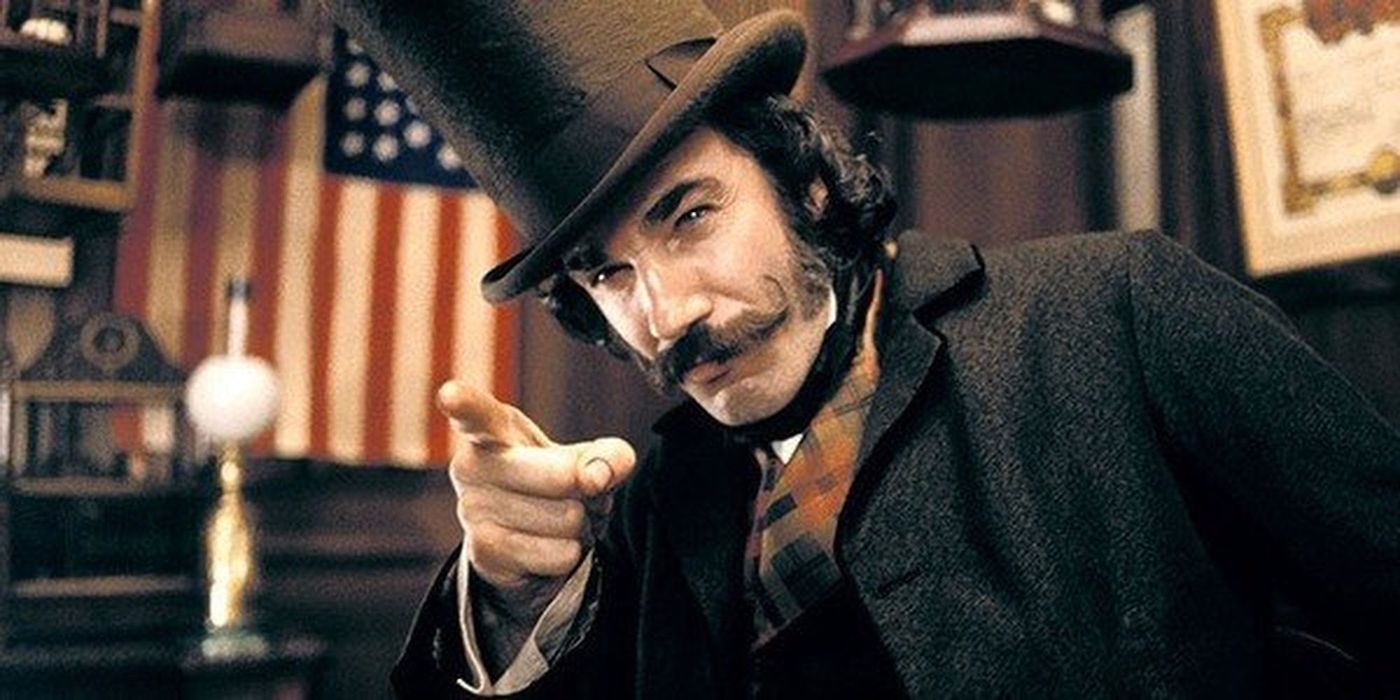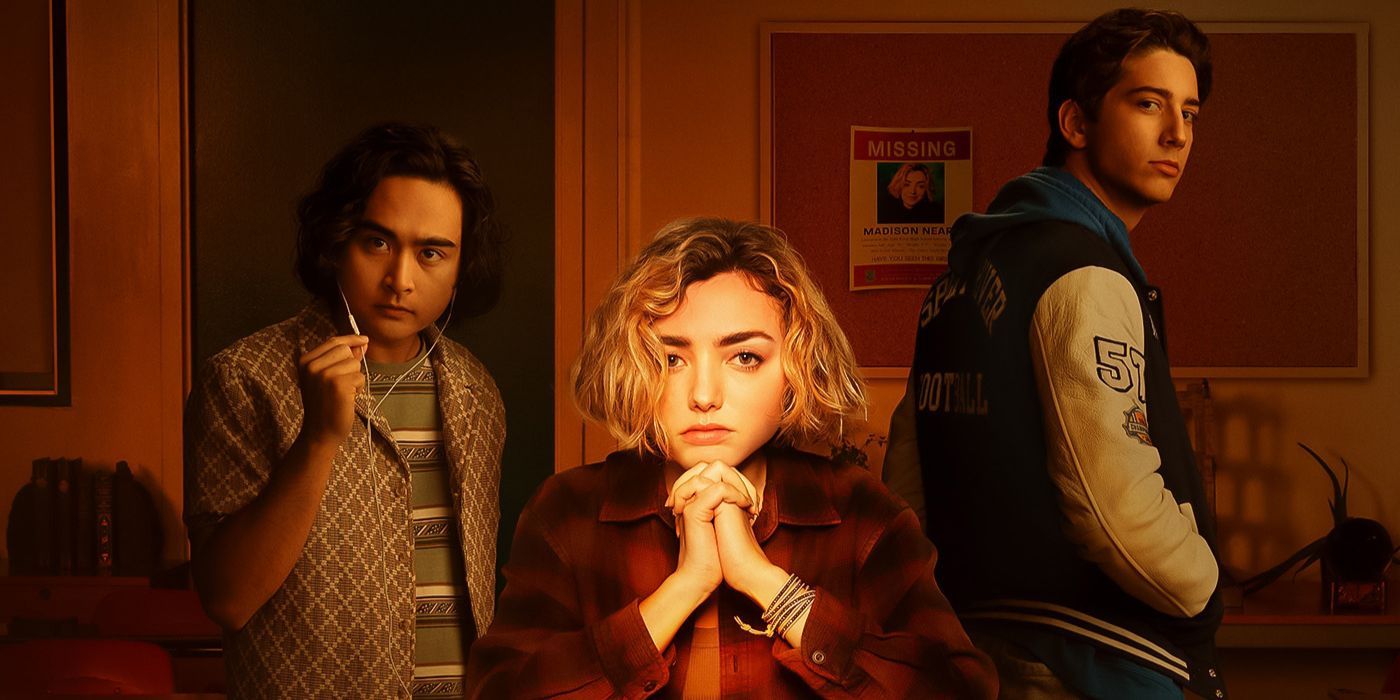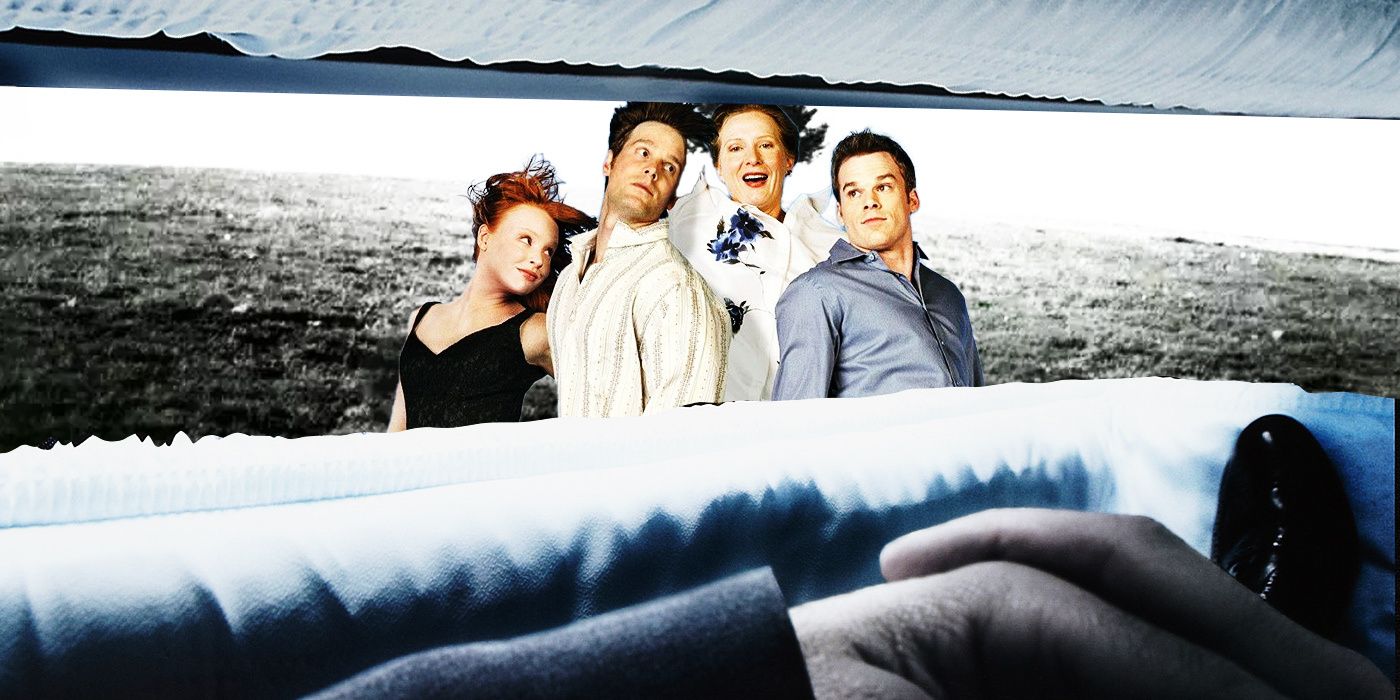The Big Picture
- Martin Scorsese’s interest in adapting
Gangs of New York
sparked in 1970, kicking off a decades-long development process. - Bringing the historical epic to the screen tested Scorsese’s limits, made more difficult by frequent tension with producer Harvey Weinstein.
- Budget overruns, creative disputes, and delays marred the film’s production, though it ultimately performed well with audiences and was nominated for 10 Academy Awards.
As Martin Scorsese‘s career was on the rise in the early 1970s, he read a novel that captured his imagination. Chronicling the turbulent era of warring street factions in The Big Apple during the 19th century, Herbert Asbury‘s The Gangs of New York was first published in 1928. Fascinated by the historical period and the sordid personalities populating it, as well as feeling a personal connection via his upbringing in New York City, Scorsese set his sights on crafting a film adaptation based on Asbury’s novel. Decades later, Gangs of New York finally debuted in December 2002. While the film would ultimately receive an overall warm reception, gross $183 million worldwide, and nab 10 Academy Award nominations, taking it from the page to the screen was one of Scorsese’s most arduous and ambitious undertakings to date.
Gangs of New York
In 1862, Amsterdam Vallon returns to the Five Points area of New York City seeking revenge against Bill the Butcher, his father’s killer.
- Release Date
- December 20, 2002
- Runtime
- 167 minutes
- Main Genre
- Crime
Martin Scorsese Began Developing ‘Gangs of New York’ in 1970
While at a friend’s house on New Year’s Day, 1970, Martin Scorsese stumbled across and read The Gangs of New York. Thrilled by Herbert Asbury’s historical novel, the budding filmmaker contacted his friend and screenwriter, Jay Cocks, about adapting it for the big screen. Strangely likening it to “a western in outer space,” Scorsese toyed with the notion of courting actors like Malcolm McDowell and incorporating lyrics by Bruce Springsteen as a narrative device. After completing a draft alongside Cocks in 1977, however, the filmmaker moved on to direct 1980’s Raging Bull. The same year, the infamous box office failure of Michael Cimino‘s historical epic, Heaven’s Gate, shook Hollywood’s confidence in financing big-budget period pieces, effectively rendering Gangs of New York too costly and risky in the eyes of major studios.
1:55

How Much of Martin Scorsese’s ‘Gangs of New York’ Is True?
The Five Points and its mean streets.
As years passed, with Scorsese’s career seeing ups and downs throughout the ’80s and ’90s, Gangs of New York‘s sizable scope appeared a seemingly unlikely prospect for the lauded filmmaker, but he didn’t let the project go. At various points, Universal Pictures, Disney, and Scorsese’s frequent collaborator Robert De Niro were attached to the planned adaptation, though Disney ultimately objected to the film’s violent content and the actor dropped out over scheduling conflicts. Adding to the complications was Scorsese’s trio of consecutive box office disappointments with Casino, Kundun, and Bringing Out the Dead. But as the new millennium approached, he caught the attention of Harvey Weinsteinwho, eager to work with the legendary filmmaker, signed on to produce Gangs of New York through Miramax films. After securing funding through a $65 million deal for international distribution, Scorsese was finally able to move forward with his long-gestating passion project, but bringing the historical epic to the screen would test his limits.
Martin Scorsese Clashed With Harvey Weinstein While Shooting ‘Gangs of New York’
With an A-list ensemble cast and an $83 million budget, by far Scorsese’s biggest at the time, Martin Scorsese began filming Gangs of New York at Rome’s Cinecitta Studio. To recreate The Five Points neighborhood of 1860s New York City, production designer Dante Ferretti and his crew built a massive, painstakingly detailed set on the studio’s expansive backlot, a set so big that executive producer Michael Hausman had to recruit additional extras to populate Scorsese’s frame. It didn’t take long for Gangs of New York‘s sheer scale to set the production back, with Scorsese making game-time decisions regarding changes to the script and how he wanted to shoot certain logistically complicated scenes.
To make matters worse, Scorsese and producer Harvey Weinstein clashed over creative decisions, leading to tense behind-the-scenes discussions that often ended in strife. Aside from hounding the filmmaker to work at a faster pace, Weinstein jumped on Scorsese about everything from Bill the Butcher’s (Daniel Day-Lewis) wardrobe to the gang label “Dead Rabbits” to, according to The Guardian, the amount of oil in actors’ hair. Things allegedly got so heated between the abrasive producer and the embattled filmmaker that Michael Hausman eventually had to act as their go-between, screening Weinstein’s questions and coaching Scorsese on how best to answer before meetings. Recalling one particularly volatile incident, Hausman told The Independent, “Marty went over and threw a desk upside down – with a PA’s computer on – and ran out of the room. We didn’t see him for the rest of the day.”
As production continued, Gangs of New York‘s reportedly went over schedule by eight weeks and over-budget by $20 million. “I was there for the last week of shooting,” says co-writer Jay Cocks. “The pressure on Marty was extraordinarily intense.” After scrambling to finish the film, which required Scorsese to shoot extra coverage after time and money had run out, the audacious period piece was eyeing a planned release for the tail end of 2001. But Gangs of New York would hit yet a few more snags after its decades-long development and unwieldy production.
‘Gangs of New York’s Theatrical Release Was Delayed a Full Year
Originally slated to hit screens in December 2001, Gangs of New York‘s theatrical release was delayed in the aftermath of 9/11. With a new release date scheduled for the following year, industry tabloids seized on the opportunity to speculate and report on the behind-the-scenes drama between Martin Scorsese and Harvey Weinstein, as well as other gossip that ultimately proved unfounded. According to The Independent, a major topic of contention between Scorsese and Weinstein was the film’s runtime, with the former assembling a three-hour-and-forty-minute rough cut and the latter pushing for a shorter version for economic reasons. Executive producer Michael Hausman admits, “I’m a producer and producers always want movies under two hours. So you can get more screenings in a day.”
Despite their clashes behind-the-scenes, Scorsese and Weinstein buried the hatchet in public as Gangs of New York debuted in December 2002, one week after star Leonardo DiCaprio‘s competing holiday release, Catch Me If You Can. Clocking in at a lengthy but manageable two-hours-and-forty-six minutes, the film was generally well-received, performed respectably at the box office considering its $100 million price tag, and ultimately nabbed an impressive 10 Academy Award nominations. While Gangs of New York may not be among Scorsese’s most revered achievements, it’s nonetheless full of spectacle, powerful performances, and features some of the filmmaker’s most fierce and ambitious direction to date. Perhaps most significantly, however, the 2002 adaptation of Herbert Asbury’s 1928 novel represents the culmination of decades of work, passion, and commitment on the part of one of New York’s quintessential cinematic storytellers.
Gangs of New York is available to stream on Max in the U.S.
WATCH ON MAX



